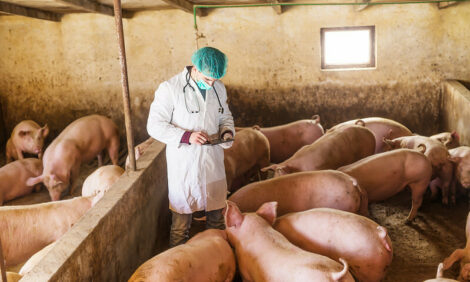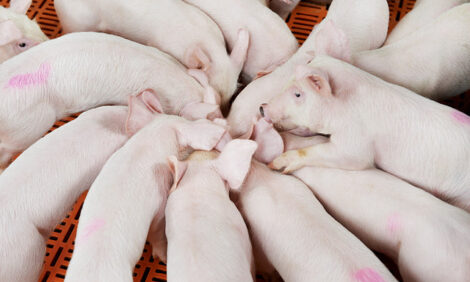



Controlling Disease in Young Pigs
US - Mycoplasmal pneumonia and porcine circovirus are two of the costliest diseases affecting pork producers. Helping provide protection before disease exposure is critical to the success of any vaccination programme, according to Pfizer's Team Pork."It's critical to remember that with mycoplasmal pneumonia, it's always a footrace between immunity and exposure because pigs may become infected with M. hyopneumoniae within the first three weeks of life 2,3," says John Baker, owner and founder of Warrick Veterinary Clinic in Boonville, Indiana, and the 2011 AASV Swine Practitioner of the Year.
He adds: "Early vaccination not only provides early immunity, but it also causes less stress on pigs than post-weaning vaccination and provides better vaccination technique when handling each pig as it is vaccinated."
Pfizer Animal Health's M. hyopneumoniae-Circovirus vaccination programme consisting of RespiSure-ONE® at processing and Fostera™ PCV at weaning helps fill a gap in M. hyopneumoniae protection and is the only one-dose programme that helps prevent PCV2 viremia.
"It's all about taking circovirus out of the equation. If we are able to do that, we are going to minimize the risk of PCV-associated diseases," says Patrick Halbur, DVM, M.S., Ph.D., executive director of the Iowa State University Veterinary Diagnostic Laboratory. "If we could decrease the per cent of pigs in a population that are viremic and if we can decrease the level of that viremia, we will have more profitability in the group and less circovirus-associated diseases."
"I recommend producers and practitioners make their vaccine choice based on evidence that porcine circovirus vaccines will decrease the incidence and the level of viremia. Fostera PCV does just that," says Dr Halbur.
Swine Health Symposium
To help swine veterinarians learn more about controlling these costly diseases, industry experts, including Drs Baker and Halbur, presented at a swine health symposium held in Lincoln, Nebraska, this fall.
In addition to the workshops, attendees toured the Lincoln manufacturing facility, where more than 500 Nebraska residents are employed.
This manufacturing facility spends $31 million annually on local materials to support Nebraska's economy. The facility also continues to identify partners for future collaborative efforts in research and development.
Learn more about the M. hyopneumoniae-Circovirus vaccination programme and explore how it helps fill a gap in M. hyopneumoniae protection.
1. Holtkamp D, Rotto H, Garcia R. 2007. Economic Cost of Major Health Challenges in Large US Swine Production Systems. In Proc. Of Amer. Assoc. Swine Prac. 85-89.
2. Fano E, Pijoan C, Dee S, Deen J. Effect of Mycoplasma hyopneumoniae colonization at weaning on disease severity in growing pigs. Can J Vet Res. 2007;71:195-200.
3. Sibila M, Nofrarias M, Lopez-Soria S, Segales J, Riera P, Llopart D, Calsamiglia M. Exploratory field study on Mycoplasma hyopneumoniae infection in suckling pigs. Vet Microbiol. 2007;121:352-356.
Further Reading
|
| - | Find out more information on the diseases mentioned in this article by clicking here. |









